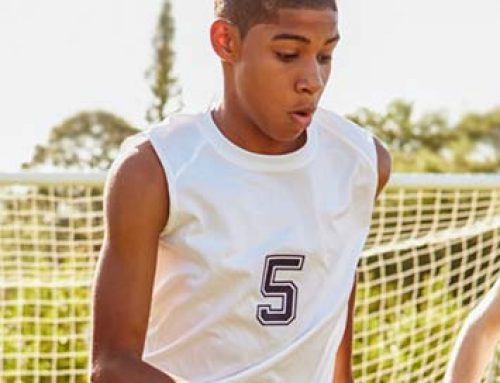
THURSDAY, Oct. 19, 2017 (HealthDay News) — State laws aimed at curbing an alarming rise in concussions among student athletes appear to be working.
Since 2014, all 50 states and the District of Columbia have passed laws to protect young athletes against traumatic brain injury (TBI). Washington state was the first in 2009.
Most of the laws require athletes with suspected concussions to stop playing until a doctor clears them to return. Coaches, players and parents must also receive yearly education about concussion.
“This movement to get these laws passed has made a huge difference,” said Kenneth Podell, director of the Houston Methodist Concussion Center, who reviewed a new study assessing the laws.
Led by Nationwide Children’s Hospital in Columbus, Ohio, researchers examined concussion reports to a nationwide sports injury tracking program before and after the laws were passed. The data covered nine high school sports: football, boys’ basketball, soccer, baseball and wrestling as well as girls’ basketball, soccer, softball and volleyball.
The takeaway: Players were more likely to report a concussion, and the number of repeat injuries fell dramatically after the laws went into effect.
Between fall 2005 and spring 2016, student athletes reported about 2.7 million concussions. Of those, 89 percent were new and 11 percent were repeat injuries.
In 2005, nearly 135,000 initial concussions were reported. The number jumped to more than 360,000 by 2016.
Principal investigator Ginger Yang attributed the increase in “new concussions” to increased awareness of symptoms and reporting. Before the laws, many people simply didn’t know how to recognize a concussion, so suspected or actual injuries were never reported, she said.
Yang is with the Center for Injury Research and Policy at Nationwide Children’s Hospital.
Predictably, football players sustained the most concussions, accounting for about half of those reported. Girls who played soccer had the second-highest rate, according to the study.
After concussion laws were introduced, however, repeat injuries fell dramatically, from about 14 percent of all concussions in 2005 to roughly 7 percent in 2016.
Podell said the added attention created by the laws has been a game-changer.
“More and more, year after year, as time goes on more kids self-report symptoms and pull themselves out of the game,” he said. “This will pay dividends down the road.”
Despite improvements in reporting and managing concussions, however, Yang said more must be done to protect players.
“Our results, along with those of others, can be used as evidence for the need of more public health efforts that focus on preventing concussions in the first place, such as preventing or reducing initial head or body impact,” she said. Other strategies could include setting limits on heading the ball in soccer and stricter adherence to rules.
An estimated 1 million to 2 million people age 18 or younger sustain a concussion in the United States each year during sports or other recreational activities. These injuries can have lasting effects on developing brains, including personality changes and problems with thinking and coordination, according to the U.S. Centers for Disease Control and Prevention. Multiple concussions over an extended period can have cumulative effects.
The study was published Oct. 19 in the American Journal of Public Health.
SOURCES: Ginger Yang, Ph.D., M.P.H., associate professor, pediatrics, Nationwide Children’s Hospital, and principal investigator, Center for Injury Research and Policy, Columbus, Ohio; Kenneth Podell, Ph.D., director, Houston Methodist Concussion Center; American Journal of Public Health, Oct. 19, 2017
News stories are written and provided by HealthDay and do not reflect federal policy, the views of MedlinePlus, the National Library of Medicine, the National Institutes of Health, or the U.S. Department of Health and Human Services.
[the_ad id=”28610″]





Leave a Reply